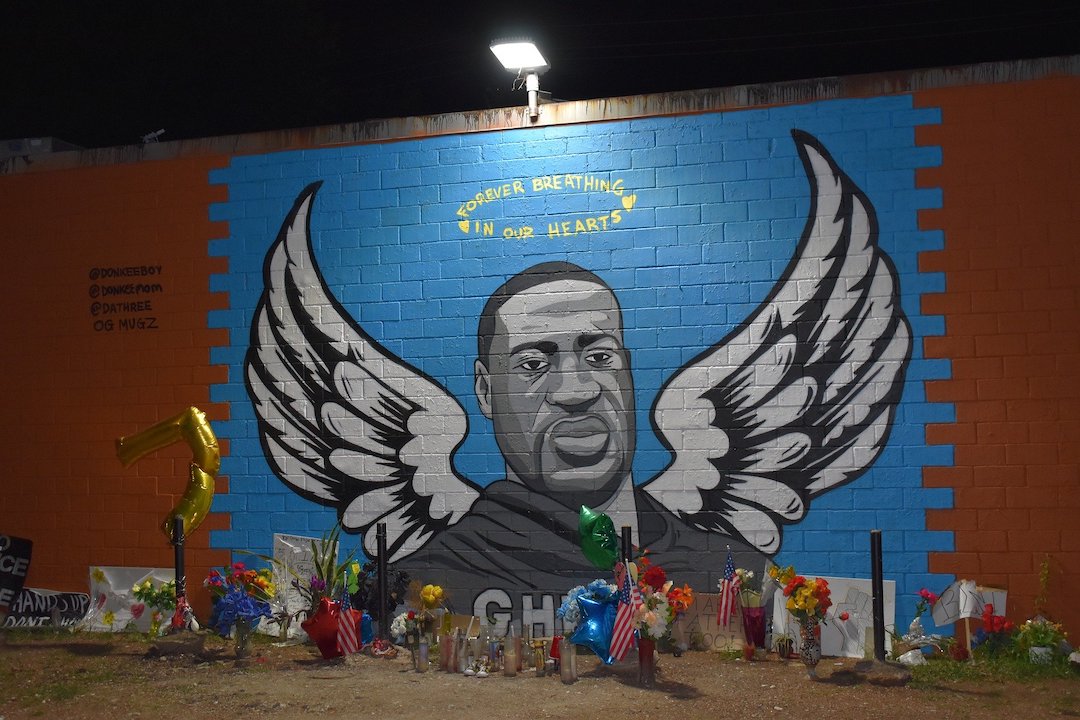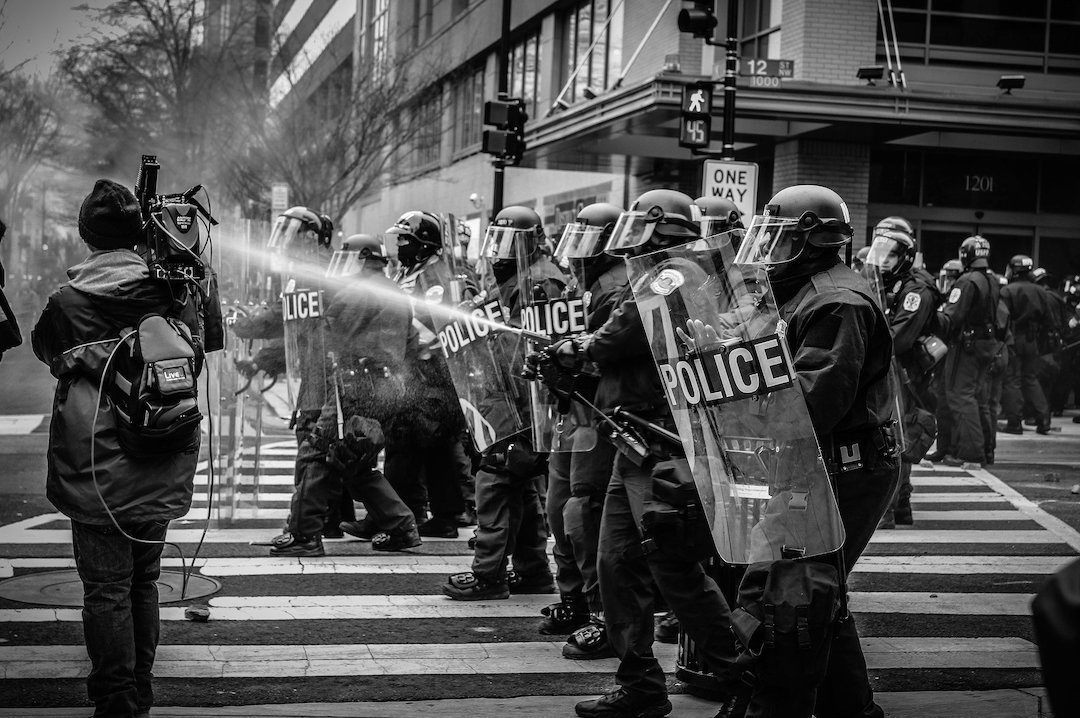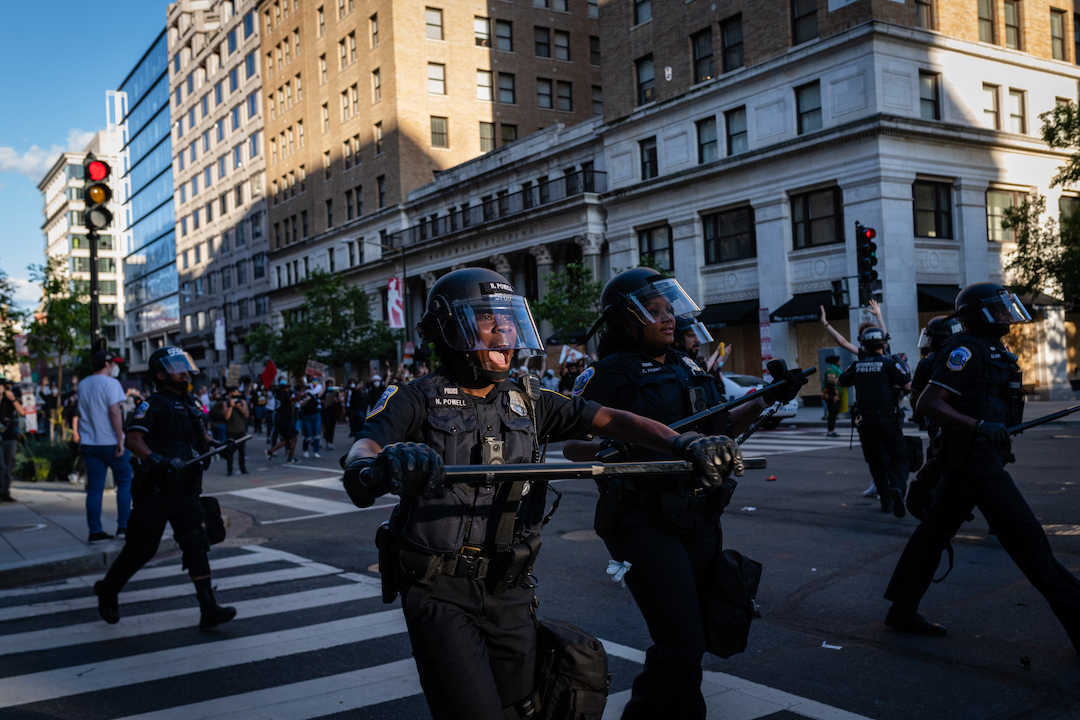By Tatyana Hopkins
A Minneapolis jury found former police officer Derek Chauvin guilty Tuesday afternoon of all three charges in the killing of George Floyd. Mr. Chauvin was convicted of second-degree murder, third-degree murder and manslaughter—a rare instance that a law enforcement officer was charged and convicted on charges related to using deadly force.
Cynthia Lee, the Edward F. Howrey Professor at GW Law, who has written and researched extensively about police reform and the impact of racial issues on criminal trial juries, spoke with GW Today about the potential implications of the case:
Q: It is so rare for a law enforcement officer to be convicted on charges related to excessive use of force, deadly or otherwise. What factors contributed to Chauvin's conviction?
A: A confluence of factors contributed to former officer Derek Chauvin's conviction. The video footage of what happened was by and large the most important factor. Without that video footage, it would have been easier for the defense to raise doubt about what actually happened. The video footage, however, was not the only factor. We had video footage of a police officer shooting Walter Scott in the back, and the jury in that case could not agree on a verdict.
Another factor that contributed to the verdict in this case was the fact that so many police officers from the department, including the chief of police, testified that Chauvin's actions were not in accordance with department policy. It is very rare to find police officers willing to testify against a fellow police officer. This case was unusual in that so many officers from Chauvin's department took the stand and testified that what he did was not an authorized use of force.
Another factor that likely contributed to the verdict was the fact that the jury was diverse. Not only were there seven women and four men on Chauvin's jury, half the jurors were people of color--four Black individuals and two who self-identified as multi-racial--and the other half were White. As law professor Kim Taylor-Thompson has observed, "[a]n individual's experiences influence her capacity to interpret and evaluate facts and then to make judgments about justice. More particularly, race and gender inform the processes by which individuals make decisions, especially about social justice."
Additionally, the prosecution did a masterful job of presenting the evidence supporting its case and humanizing George Floyd. Hearing from all the different people who saw what happened and felt it was wrong was very powerful. Seeing the video of Chauvin kneeling on Floyd's neck for 9 minutes and 29 seconds was also very powerful. I also thought the prosecution did a particularly good job during closing arguments of explaining the elements of each charge and how they had met their burden of proof on each element.
Q: Is the trial outcome likely to influence prosecutors in Minnesota and other states in their review of future cases of use of excessive force?
A: Yes, I think the verdict is likely to influence prosecutors across the nation in their review of future cases of police use of excessive force. For far too long, police officers who have used excessive force have not been prosecuted. By and large, the few who have faced criminal charges have not been convicted. Prosecutors deciding whether to bring charges in any criminal case usually weigh the likelihood of conviction as a factor in their decision to charge. The Chauvin case shows that officers can be held accountable and should encourage prosecutors to bring charges in cases where they may not have brought charges in the past. The Chauvin trial also provides a blueprint for future successful prosecutions.
Q: What will factor into Chauvin's sentencing?
A: Former officer Chauvin was convicted of second-degree unintentional murder (felony murder), which carries a maximum of 40 years in prison, third-degree murder (depraved heart murder), which carries a 25-year maximum sentence, and second-degree manslaughter, which carries a maximum of 10 years in prison. Minnesota law permits sentencing on only one of these charges, the most serious charge, since all three charges arise out of the death of George Floyd.
Despite the 40-year maximum authorized sentence for second-degree unintentional murder, Minnesota's sentencing guidelines suggest that the presumptive sentence for this charge is 12.5 years. A judge can depart upward from a presumptive sentence only if the judge finds one or more aggravating factors that justify an upward departure. The prosecution team has asked that the judge depart from the presumptive sentences and give Chauvin more than the presumptive 12.5-year sentence based on a number of aggravating factors, such as the fact that the crime was committed in front of a child, the crime involved particular cruelty and the crime was committed by three or more individuals. The judge will weigh these and other factors in deciding what sentence to impose.
Q: What are some steps that can be taken to achieve comprehensive police reform?
A: Congress should pass the George Floyd Justice in Policing Act, which among other things would establish a National Police Misconduct Registry, prohibit federal law enforcement officers from engaging in racial and religious profiling, ban the use of chokeholds by federal law enforcement officers and incentivize state and local governments to do the same, require that deadly force only be used as a last resort, require officers to engage in de-escalation measures prior to using deadly force, amend qualified immunity, and change the standard in 18 U.S. Code, subsection 242, which makes it a crime for government officials, including law enforcement officers, to deprive a person of their federally-protected rights or impose different punishments based on a person's race from "willfully" to "knowingly or with reckless disregard."
Many states took the lead in enacting comprehensive police reform legislation last year following the death of George Floyd. For example, in contrast to most use of force statutes on the books, which focus solely on whether the officer's belief in the need to use force was reasonable, new use of force laws in Virginia, Connecticut and the District of Columbia provide that an officer must not use deadly force unless (1) the officer reasonably believes deadly force is immediately necessary to protect against a threat of death or serious bodily injury; (2) the officer's actions are reasonable; and (3) all other options have been exhausted or do not reasonably lend themselves to the circumstances.
These new statutes also ban or limit the use of chokeholds and other neck restraints and require the jury to consider whether the officer engaged in de-escalation measures prior to using deadly force and whether the officer's conduct increased the risk of a deadly confrontation. Just this month, Maryland repealed its Law Enforcement Officers Bill of Rights and enacted new use of force legislation, providing that an officer may not use force against a person unless, under the totality of the circumstances, the force is necessary and proportional to prevent an imminent threat of physical injury to a person or effectuate a legitimate law enforcement objective.
States that still focus solely on the reasonableness of the officer's beliefs should consider amending their use of force statutes. States that still do not have a use of force statute should enact use of force legislation.




